Echolocation for Blind Children
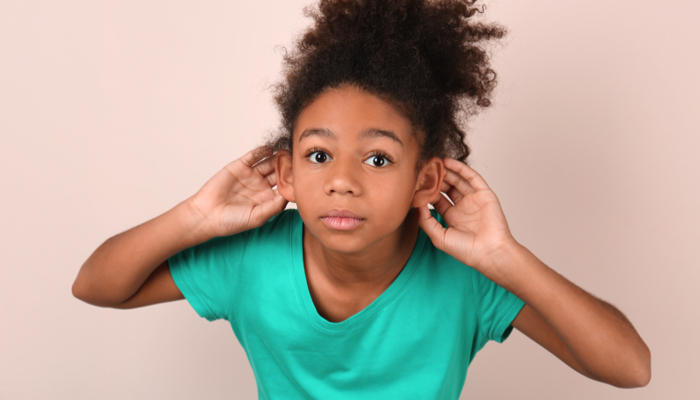
This post may contain affiliate links; please see our terms of use for details.
By Tim Johnson
Whether a child is blind from birth or loses his or her vision at a young age, they will need to learn to navigate and orient themselves with means other than vision.
One of the first regimented modes of orientation and mobility that children learn is the use of a cane, which is essentially serving as an extension of the hands and fingers to feel the world around them.
There are many other forms of perceptual O&M training that are less regimented. One such skill is that of echolocation—the ability to interpret sounds to “see” the world around you.
Echolocation is a natural practice for any youngster with a visual impairment. Children will often walk into a new space or new room and stomp their feet or yell, seemingly out of the blue. What they are really doing is perceiving a change in the “soundscape” or the echoes that the room produces. Young children, without being trained, can easily tell if they are indoors, outdoors, in a large empty room or a small furnished room, etc. simply by listening to the echoes or “reverberations” of that particular space.
The “skill” of echolocation has not generally been taught in regimented training. It is instead used subconsciously to gain a small amount of information about one’s environment. However, with more research and more people willing to try, echolocation is becoming far more accepted and understood by practitioners and trainers. It can give the user information about distant objects, materials, shapes, and movement of objects without having to physically interact with them via a cane. It allows the blind to “sight-see” and enjoy trees, statues, architecture and more.
Since echolocation is a skill that recommissions neurons and actually utilizes the visual cortex of the brain to eventually produce “non-visual images,” it is strongly recommended that teachers and parents of visually impaired children start actively training their child to pick up on these audible cues and nuances as early as possible.
The development of these neural connections at a young age will exponentially increase the ability of visually impaired children to see objects through echolocation in great detail, and at great distances, and will have a very good chance of giving them the confidence and independence that they need to live a happy, fulfilled life and overcome their challenges.
An Echolocation Exercise to Try with Your Child
In order to really see for yourself the benefit that echolocation can have for your child’s life, it’s important to witness it first hand and see the expression on their face when they “see” an object for the first time.
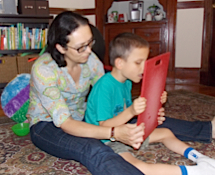 Use two props: one, a notebook or flat piece of cardboard or plastic platter; and the second, a large stuffed animal, at least 12 inches tall and fairly bulky.
Use two props: one, a notebook or flat piece of cardboard or plastic platter; and the second, a large stuffed animal, at least 12 inches tall and fairly bulky.- In a quiet environment, in a room that is not too small, maybe your living room, have your child sit quietly and listen.
- Tell them to make the sound “ssshhhh” and listen to themselves.
- Next hold the flat object about 10 inches in front of their face and ask them to make the sound again. You might notice that they will pull their head back slightly with the sensation that there is something in front of them now. Tell them what the object in front of them is, and have them reach out to touch it.
- Next put the stuffed animal in front of their face and ask them to make the sound. Again tell them what the object is and have them reach out to feel it.
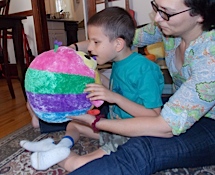 Next is the fun part! Have them guess which one is in front of them after they make the sound. You will be amazed at how much they already know.
Next is the fun part! Have them guess which one is in front of them after they make the sound. You will be amazed at how much they already know.
Your child has now seen their first object with echolocation and can tell the difference between hard and soft objects!
They will probably be very excited to know that they can tell what something is without touching it and will want to play this game more often. Encourage this!
Read up on echolocation and learn the ins and outs of what it is and what perceptual responses it can provide for your child. More research is being published every day and more organizations are picking it up to start a regimented training program.
These training programs report the best luck with echolocation training in very young children. Their minds are open to anything and everything. They have not been forced into a paradigm of thinking there is a right way and a wrong way to learn O&M. They learn very quickly and make new neural connections faster than you can imagine!
Tim Johnson is the author of Beginner’s Guide to Echolocation for the Blind and Visually Impaired: Learning to See With Your Ears, the first book of its kind to fully explain and teach echolocation, step-by-step, in a comprehensive manner. Tim is an engineer by trade and utilizes his scientific knowledge during research, and he is also a martial arts instructor and utilizes his ability to distill complex concepts and communicate with children in order to present the material in a completely understandable way. You can learn more at Tim’s website or follow him on Facebook, Google+ or Twitter.
Read this article in Arabic: قراءة هذا المقال بالعربية
Related Posts

Braille and Literacy, Toys, Visual Impairment
24 Braille Toys for Kids Who are Blind
Everything from alphabet blocks to raised line coloring pages and activity books to puzzles to card and board games... and so much more! And it's all in braille ready for...
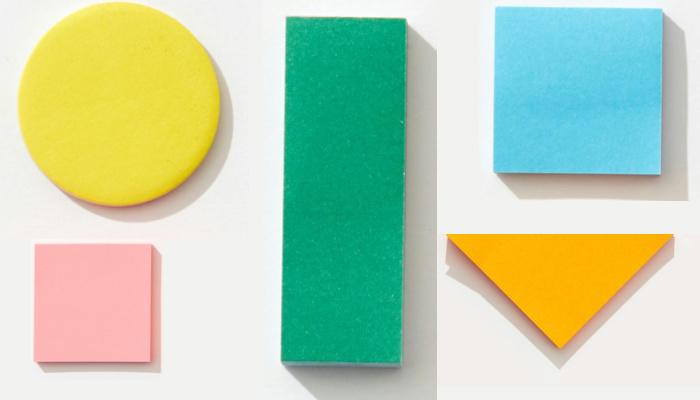
Tactile Arts and Crafts, Visual Impairment
Using Origami to Teach Blind and Low-Vision Students Basic Shapes
If, like me, you have wondered why it is important for young students to learn about shapes, here are just a few reasons. Teaching shapes in early education provides children...
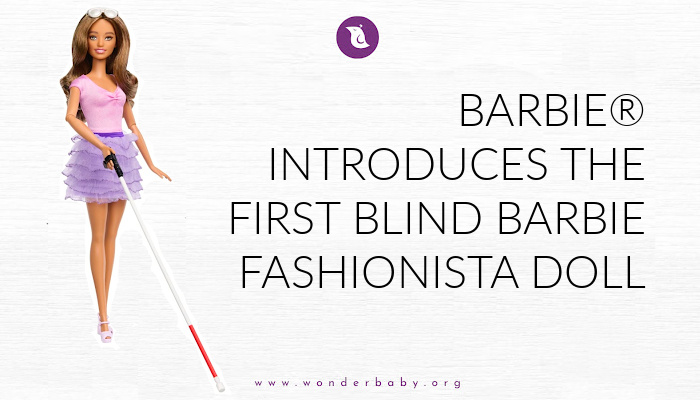
Toys, Visual Impairment
Barbie® Introduces the First Blind Barbie Fashionista Doll
Mattel, in partnership with AFB, announced the addition of a blind Barbie doll with white cane and sunglasses.